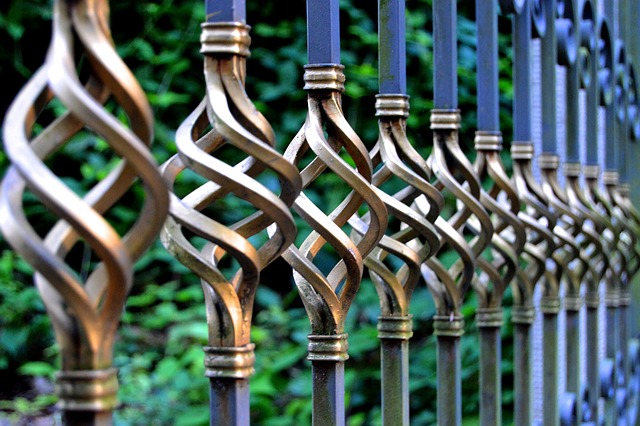In New Bedford, a well-maintained fence can significantly enhance your outdoor space’s aesthetics and security. Whether you’re looking to repair an old one or install a new fence, understanding the local market is key. This comprehensive guide delves into the various aspects of New Bedford fence repair and installation. From identifying specific needs to selecting suitable styles and materials, we’ll walk you through each step. Additionally, we’ll explore common issues, maintenance tips, and help you find reputable contractors in your area.
- Understanding New Bedford Fence Needs
- Choosing the Right Fence Style & Material
- Installation Process: Step-by-Step Guide
- Common Repair Issues & Solutions
- Maintenance Tips for Longevity
- Local Experts: Finding Reputable Contractors
Understanding New Bedford Fence Needs
Fences play a vital role in any property, offering security, privacy, and aesthetic appeal. In New Bedford, homeowners often face unique challenges when it comes to fence maintenance due to the region’s diverse climate and varying terrain. Understanding these needs is crucial for selecting the right fencing solution. From sturdy materials capable of withstanding harsh weather conditions to designs that complement the local landscape, each property has distinct requirements.
For instance, coastal areas require fences resistant to salt spray and strong winds, while properties in hilly regions need structures that can withstand uneven ground. New Bedford Fence Repair and Installation professionals are well-versed in these challenges and offer tailored solutions. They assess factors like fence placement, local weather patterns, budget constraints, and desired aesthetics to provide long-lasting, suitable fencing options for every client.
Choosing the Right Fence Style & Material
When considering fence repair or installation in New Bedford, choosing the right style and material is a crucial first step. It’s essential to consider both your personal aesthetic preferences and practical factors like durability, maintenance requirements, and budget. Traditional wood fences offer a classic look but demand regular upkeep to prevent rot and insect damage. Vinyl fencing, on the other hand, is low-maintenance and comes in various styles, from rustic to sleek modern designs.
For maximum strength and security, concrete or metal fences are robust options that can last for decades with minimal care. Each material has its unique advantages and visual appeal, so selecting one aligns with your desired ambiance – whether it’s a private backyard oasis or a secure perimeter for commercial property.
Installation Process: Step-by-Step Guide
The installation process for a new fence begins with preparing the ground, ensuring it’s level and clear of any obstructions. Next, mark out the perimeter of your desired fence using stakes and string to create a precise outline. Dig holes for the fence posts at marked locations, making sure they’re deep enough to provide stability. Once the holes are prepared, place the posts in position, ensuring they stand upright and parallel to each other. Fill the holes with concrete, allowing it to set completely before proceeding.
After the posts have solidified, attach the fence panels or rails using appropriate hardware. This involves securing them to both the posts and each other, creating a sturdy framework. The final step involves adding any finishing touches, like gates or caps on top of the posts, ensuring your new fence is both functional and aesthetically pleasing.
Common Repair Issues & Solutions
Fences often face various challenges due to weather conditions, age, and daily wear and tear. Common issues include broken or missing pickets, loose posts, rusted hardware, and damaged gates. Addressing these problems promptly is essential for maintaining a secure and aesthetically pleasing fence.
For broken pickets, replacing them with new ones is usually the solution. Inspecting the fence regularly can help identify weak spots before they become major structural concerns. Loose posts can be secured by resetting them in concrete or using tension bands to provide extra support. Rusted hardware should be replaced to prevent further damage, and a fresh coat of paint can restore the fence’s appearance. Gates that don’t open or close smoothly might need lubrication or replacement parts to ensure smooth operation.
Maintenance Tips for Longevity
Regular maintenance is key to ensuring your fence stays in top condition for years to come. Start by inspecting your fence regularly, looking for any signs of damage, rot, or weakness. Addressing issues early can prevent them from escalating and causing more extensive repairs later on. Keep an eye out for loose or missing boards, rusted hardware, and any unusual warping or deformation.
Simple upkeep like cleaning the fence with a pressure washer every few months and re-sealing it with weatherproof paint or stain will go a long way in protecting it from the elements. Additionally, trim back overhanging branches and vegetation that can block sunlight and cause moisture buildup, both of which contribute to decay. Regular maintenance not only extends the life of your fence but also keeps your property looking neat and well-maintained.
Local Experts: Finding Reputable Contractors
When it comes to fence repair and installation, New Bedford residents have a variety of options, but finding reputable contractors is key. Word-of-mouth recommendations from neighbors or local business associations can be a great starting point. Check online reviews on trusted platforms to gauge a contractor’s performance and customer satisfaction.
Local expertise brings several advantages. Contractors familiar with New Bedford’s unique challenges, weather patterns, and local regulations will ensure your fence is not only sturdy but also compliant. They’ll understand the importance of using suitable materials that can withstand the area’s specific conditions, ultimately saving you time and money in the long run.
